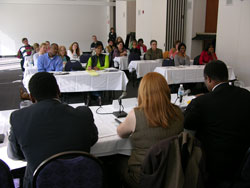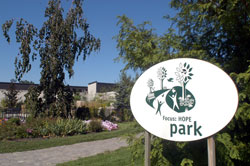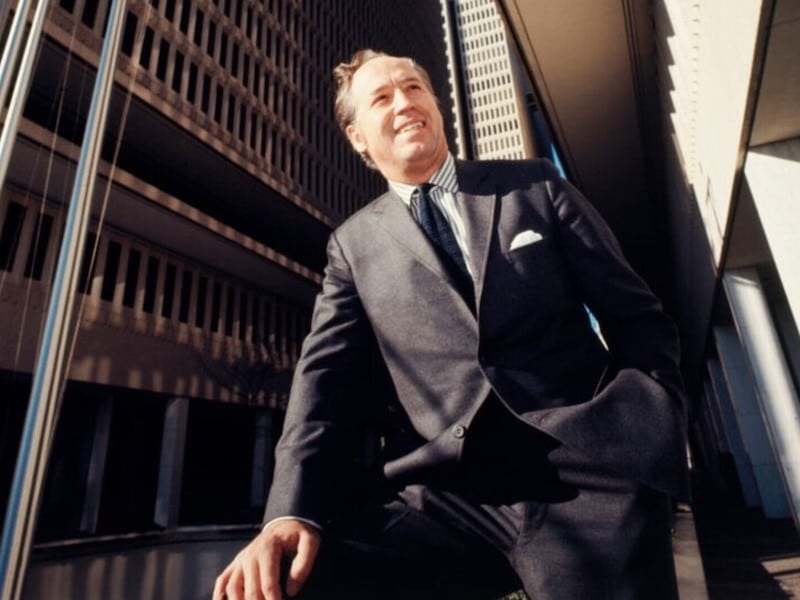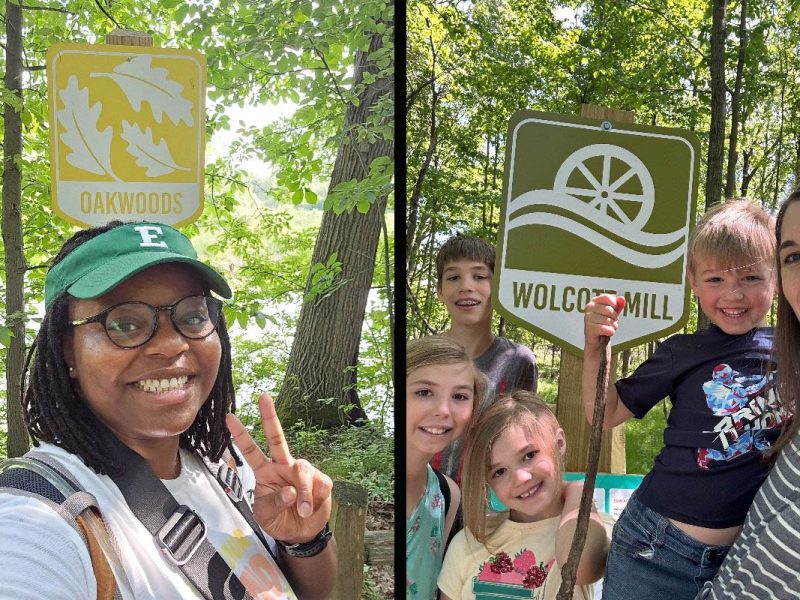Detroit 101
Ann Cuddohy Slawnik leads dozens of metro Detroiters on a three-day crash course in all things Detroit — from the impressive mansions of Boston-Edison to the hip new lofts downtown, and all the good and bad, ugly and beautiful in between.
Ann Cuddohy Slawnik is ready to take another group of metro Detroiters on what she calls a “rollercoaster ride” through the city.
“We see the good things and the bad things. We see the development and we see the blight,” Slawnik says. “We try to take people where they normally wouldn’t go.”
For three days in October, Slawnik, director of the Detroit Orientation Institute (DOI), will take a few dozen more people for her ride, offering them a chance to go off the beaten path for some brief but intensive exploration of their city.
 The DOI, a program of Wayne State University’s College of Urban, Labor and Management Affairs, offers its three-day course twice a year, with the next session set for Oct. 11, 18 and 25.
The DOI, a program of Wayne State University’s College of Urban, Labor and Management Affairs, offers its three-day course twice a year, with the next session set for Oct. 11, 18 and 25.
The program began in 1991, originally to introduce journalists new to the city to Detroit culture — teaching them to pronounce the names of city streets and giving them a crash-course in local history and politics, Slawnik says. But it’s not just for reporters anyone or newbies anymore. Anyone, in any walk of life, suburbanite or longtime city dweller, newcomer of old timer, is welcome to register for the course.
“The idea of the DOI is to really showcase the history, the background — why Detroit became the way it is,” Slawnik says.
The program includes a series of panel discussions and speakers on topics like demographics, culture, politics, history, crime, the automobile industry, education and politics. Speakers for this next session include former Mayor Dennis Archer, longtime TV anchor Emery King, and Michigan Opera Theatre general director David DiChiera. Participants also will explore the city by bus, including a stop at the Detroit Opera House for lunch at its café before a behind the scenes tour. Other stops include residential sites like the mansions of Indian Village and new loft development at Merchant’s Row, as well as tours of the Guardian Building, FOCUS Hope and a public school classroom.
Beauty and the blight
 Slawnik says the discussions are intentionally off the record so panelists and participants can speak freely and frankly. They don’t skirt around the tough issues — the first panel, in fact, tackles issues of race and demographics.
Slawnik says the discussions are intentionally off the record so panelists and participants can speak freely and frankly. They don’t skirt around the tough issues — the first panel, in fact, tackles issues of race and demographics.
“You’ve got to deal with race, you have to, and race underlies a lot of the discussions,” Slawnik says.
Additionally, the tours take participants to some of the city’s premiere neighborhoods, but they don’t bypass the less fortunate ones.
The goal is to show the city for what it is, Slawnik says, and DOI graduates say the program succeeds.
Joe Guy Collier, a reporter for the Detroit Free Press who moved here from South Carolina two years ago, says the DOI gave him a pro-Detroit yet still objective portrait of the city.
 “You saw Indian Village. You saw Boston-Edison. You saw the pretty parts of Detroit,” Collier says. “But by nature they can’t take you to the pretty parts without seeing the burned out parts.”
“You saw Indian Village. You saw Boston-Edison. You saw the pretty parts of Detroit,” Collier says. “But by nature they can’t take you to the pretty parts without seeing the burned out parts.”
That objectivity carries over to the panel discussions, he says. “There’s somewhat of a sales pitch for the city, but they balance it. Some of the panelists are very frank.”
LaShanda Golden, a banking center manager for Fifth Third Bank, was raised in the city, but had moved away for a few years. She says the DOI showed her the city from a different perspective. “It reconfirmed my commitment here,” she says.
“I actually saw, for the first time, the city in a different light – politically and socio-economically,” Golden says. “I grew up in Detroit, so I was familiar with both the beauty and the blight, but hadn’t worked here in five years. I was so moved at the state of the schools, and yet encouraged at the revitalization.”
So much to show
The DOI is also a vehicle for discovery.
Husband and wife Jim and Sherry McGough of Farmington Hills sought out the DOI after moving here from Des Moines, Iowa, about a year ago. He’s in advertising sales and she teaches at Oakland Community College. They wanted to learn more about the city, Jim McGough says. “We’re the kind of people who like to explore.”
The DOI opened Detroit up for them, he says. “I’ve had people in my office who’ve said, ‘You know more about the city than we do.’” Collier, who lives in Royal Oak, had lived in metro Detroit for an internship at Chrysler, but had spent most of his time in Oakland County. The DOI showed him just how vast the city is.
 “It’s a big city with lots of different neighborhoods,” says Collier. “If you just drive down Woodward or I-75, just wouldn’t see it. Unless you have someone physically take you from place to place, you’d never see it.”
“It’s a big city with lots of different neighborhoods,” says Collier. “If you just drive down Woodward or I-75, just wouldn’t see it. Unless you have someone physically take you from place to place, you’d never see it.”
Slawnik says even she learns about the city with each DOI. Plus, she says, Detroit has been changing so rapidly, especially with the recent flood of residential and commercial development, that there is always much more to discuss and explore.
“There’s so much to show now,” she says. “Four years ago, I really had to struggle to figure out where I was going to go to show them something that’s new. Now, there aren’t enough hours in the day.”
More on the DOI:
The Detroit Orientation Institute offers programs in the fall and spring. The fall session is Oct. 11, 18 and 25. Registration is limited to 55 participants. Register for the fall session by Sept. 30. The cost is $750. Background information, a CD-ROM, meals and transportation around the city are provided. Director Ann Cuddohy Slawnik says the DOI also can tailor special, shorter programs and retreats for groups that would like to offer employees or members a chance to explore the city. For more information, go to http://www.culma.wayne.edu/doi/ or call her at 313-577-0171.
Photos:
Guardian Building – Copyright Dave Krieger
Wayne State University “Old Main” – Copyright Dave Krieger
DOI Panel – Copyright DOI
Home in Boston Edison Neighborhood – Copyright Dave Krieger
Focus Hope Park – Copyright Dave Krieger





